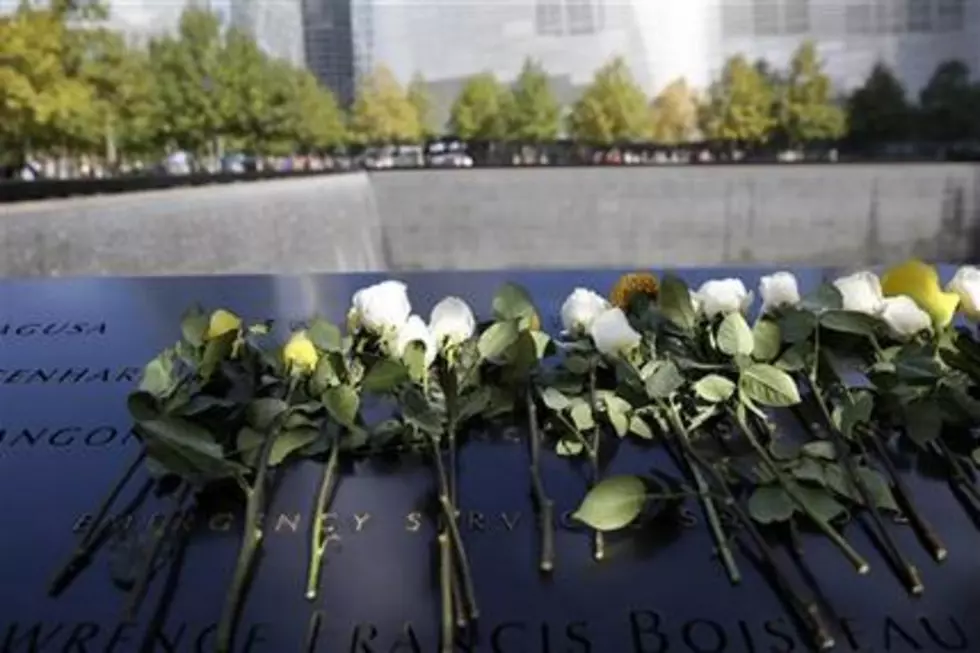
They lived through Sept. 11; now they relive it for tourists
NEW YORK -- For almost a decade after her brother was killed on 9/11, Jeanmarie Hargrave avoided the World Trade Center. Being there was "too emotional, too sad."
But five years ago, she tried a different way of grieving. She joined a group of about 800 people touched personally by the attacks who now lead tours of the Sept. 11 memorial plaza.
The guides, who include attack survivors, rescue and recovery workers and people who lost a loved one, give visitors the soul-stirring experiencing of walking through the rebuilt complex with people who came face to face with the attack and its aftermath.
And in return, guides like Hargrave, of Maplewood, New Jersey, get an emotional outlet.
At first, she said, "I had a very difficult time telling my personal story. I would cry through the whole thing." But that soon changed.
"These people can cry with you and laugh with you. And that makes it much easier," said Hargrave, whose brother, T.J. Hargrave, worked in the twin towers at the financial services company Cantor Fitzgerald.
The daily, 75-minute tours are organized by the 9/11 Tribute Center , a nonprofit created by the September 11 Families Association, one of the groups representing people who lost a relative in the attacks.
After leaving the Tribute Center's gallery, which contains artifacts, images and oral histories of the attacks, the tour groups visit a memorial to lost firefighters on the side of a Liberty Street firehouse that was nearly destroyed in the attacks.
Two guides then lead each group through the World Trade Center's tree-filled plaza to the two memorial pools, explaining -- often in deeply personal detail -- what happened on the day of the attacks.
"We opened the office door, and the hall was a wall of black smoke," guide Leokadia Glogowski told a group of two dozen visitors on one recent tour. She worked as an engineer on the 82nd floor of the north tower, and described how the building swayed when it was struck by an airliner.
"Somebody yelled, `Get out, right now! Get out!"' she told her group. She said she prayed before plunging into the smoke, feeling her way to the stairwell and walking the 82 stories to the ground.
Rose Starosta, a tourist from Saskatchewan, said hearing that first-person account made her visit to the site far more moving and intimate.
"It doesn't really hit you until somebody says she was afraid, but determined to get down," she said, her voice cracking with emotion. "When you hear someone's story, you really feel it inside, and it's totally different from just coming and looking at the buildings and memorial pools."
The Tribute Center operates separately from the official National September 11 Memorial & Museum, which controls the plaza, the two giant memorial pools and an underground museum. It runs about six tours a day, at a cost of $25 per person.
The tours aren't scripted, though the guides are trained in a series of workshops conducted in collaboration with the storytelling organization The Moth. Tribute volunteers, staff and story coaches work to craft each narration.
Jean Nebbia, a schoolteacher from Oakland, New Jersey, said that like Hargrave, she avoided the World Trade Center site for years before volunteering as a guide last June.
Now she tells the story of her brother Steven Schlag, who also worked at Cantor Fitzgerald.
"I had never really done anything as far as 9/11. I always had this heavy load that weighed me down, but I wasn't ready till this past spring. I realized that I need to do something," she said. "I don't want to stop talking about what happened that day, and this gives me a voice. I am just so grateful that I'm meeting these people and that they're willing to listen."
Another guide, retired physician Barry Aron, 75, travels from Maryland for a day each month to lead two tours.
He ends each tour at the spot where the name of his son, Joshua Todd Aron, is engraved on the bronze parapet surrounding the north tower memorial pool.
The new World Trade Center is "the place where I feel closest to Josh," he said.
He also leads his groups to a more hopeful spot -- to the "Survivor Tree," a stalwart pear that emerged from the fiery rubble, clinging to life.
"I point out to people, `You see the burned bark from 9/11? -- and the new growth?"' he says. "It's a symbol of our perseverance in the face of adversity."
Glogowski's presentation is tinged with hope, too. She tells her tour group that as she fled Manhattan after the attack, she encountered a saving grace: a girl handing out paper towels to ash-smeared survivors so they could wipe their faces.
"Goodness and love always win," she said.
(Copyright 2016 The Associated Press. All rights reserved. This material may not be published, broadcast, rewritten or redistributed.)
More From New Jersey 101.5 FM









